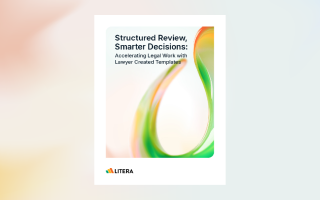Q&A With Three of 2024’s Most Influential Women in Mid-Market M&A
Despite the array of challenges from grim economic predictions to outright wars, dealmakers shrugged off challenges to remain resilient heading into the new year. Expectations for what’s next for the M&A market remain uncertain in the current environment due to a variety of global economic factors, but there is occasion for optimism amid the uncertainty.
In this edition, we’re proud to feature analysis and predictions from three women law firm partners named by Mergers & Acquisitions as honorees of its 2024 Most Influential Women in Mid-Market M&A. Below are just a few highlights from our Q&A:
Jennifer Cheng, U.S. Vice-Chair of the Global Corporate Group and Chair of the Global M&A Team, Reed Smith LLP
Q: What are your perspectives on the broader M&A environment as we enter 2024? Has your outlook on the market changed since the beginning of this year?
A: I think we have all seen a jump in M&A activity in the fourth quarter of 2023 which points to increasing optimism returning to the market, and that has been further reinforced by deal activity so far in the first quarter of 2024. Even though we have all been concerned about various macroeconomic, geopolitical and regulatory challenges and I think many have approached 2024 with some caution, there seems to be a healthy dose of optimism as well which is an outlook that I share.
Based on what I have seen so far in the market since the beginning of this year, my personal outlook has not changed and I think this is reinforced in speaking with clients and dealmakers who echo the view that there seems to be a sense of a return to greater market stability. We are also seeing a return in private equity deal activity as some funds will need to consider exit strategies and redeployments in the near future, and I am seeing a lot of interest in take-private transactions as a strategic response to current economic and market conditions. Sponsors continue to identify opportunities to acquire what they view as undervalued assets and there are particular opportunities in the current environment given the number of companies that have gone public through de-SPACs in recent years, but which have materially underperformed since closing.
Amy O’Keefe, Partner, Nixon Peabody LLP
Q: Where have you observed the most material changes in how your clients are going about M&A, with respect to strategy or other areas like deal structure?
A: One of the most significant developments I’ve seen in the M&A arena over the past 12 months is that it is now taking longer than ever to get deals done, and my clients on both the buy-side and sell-side are bracing themselves for longer timelines from letter of intent to closing. These longer timelines are being driven by increased buyer diligence as well as tightening credit markets and increased lender scrutiny of deals. But the largest factor I’ve observed in the past year is the impact of increased regulatory scrutiny. I had a number of deals that faced antitrust (HSR) and/or CFIUS scrutiny, and working through those issues added months to the deal timelines (also, given recent policy statements by the FTC, I don’t expect this antitrust regulatory scrutiny to subside much in 2024). Longer deal timelines increase uncertainty and deal risk for both buyers and sellers and also mean that both sides of the table need to be very focused on the all-important executory period covenants that govern the target’s conduct and operations between signing and closing.
Kimberly Petillo-Décossard, Partner, White & Case LLP
Q: Could you share your insights on the increasing role of B2B transactions in the M&A landscape, particularly in the digital transformation and AI space? Are there any particular deal terms relating to B2B transactions in which you are seeing notable shifts over the last few years?
A: There’s a universe of start-up technology, digital transformation, and B2B companies who last raised funds at high valuations. But today the VC community is significantly weaker, writing fewer checks and deploying less capital. Those venture-backed start-ups are increasingly looking for exits through M&A. AI is an exception here, where the VC spigots are still wide open.
But well-funded corporates are certainly aware of the opportunities created by a weakened VC community, and those companies are seeking discounted opportunities to roll-up start-ups that could bring inhouse the skills and services they need for their own technological transitions.
That creates an environment ripe for disagreements between buyer and seller when it comes to finding the right price. Earn outs are increasingly the first tool dealmakers reach for to paper over these value gaps. But while earn outs appear to be an elegant solution, they come with a host of their own challenges, in terms of how they are crafted and implemented. Without careful lawyering on the front end, they can result in acrimonious and sometimes litigious conflict on the back end.
To hear more from Jennifer, Amy, and Kimberly, and for insights into the M&A market as we look ahead to deal activity in 2024, download Litera’s M&A Activity and Outlook Report today.


